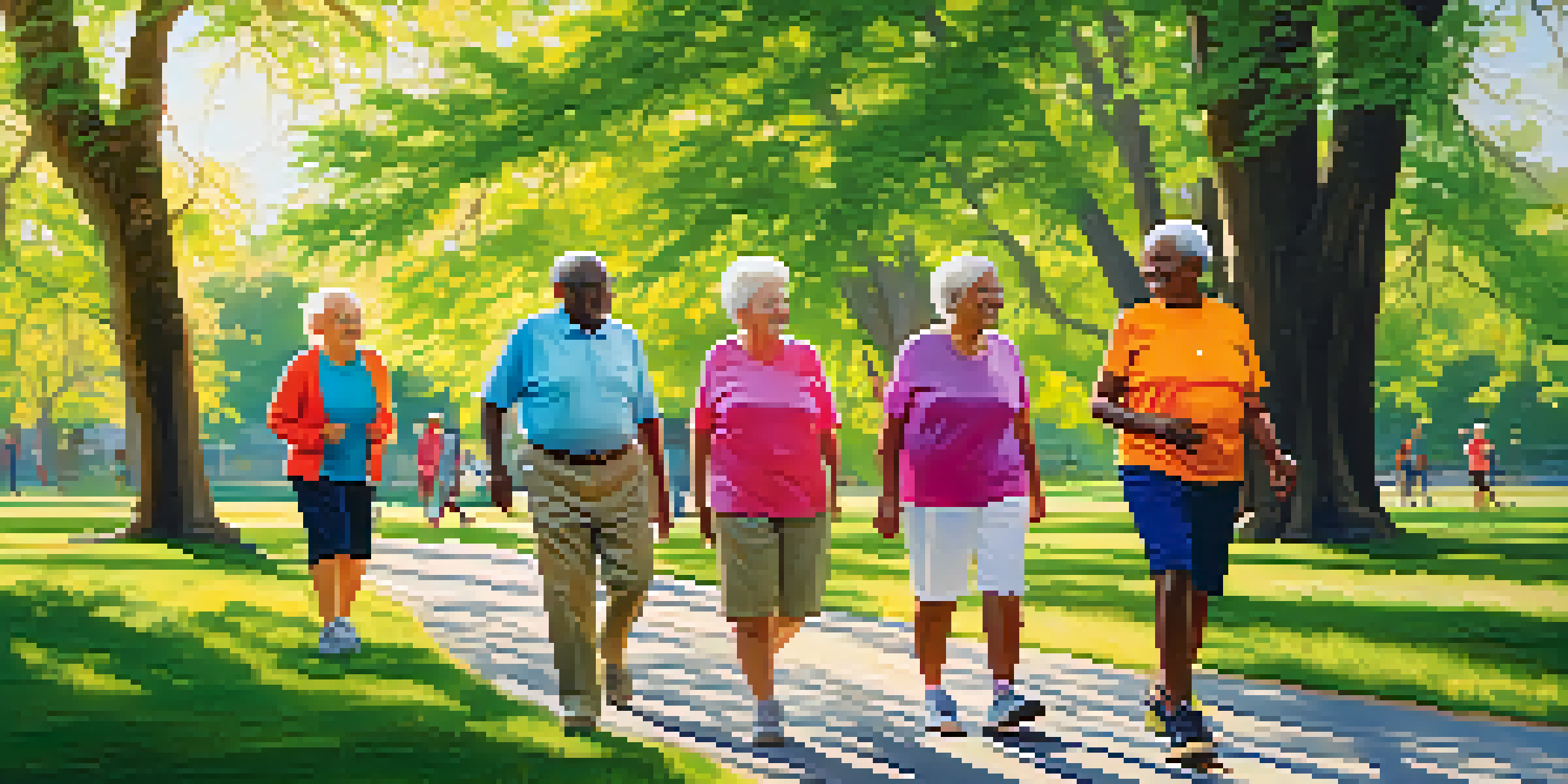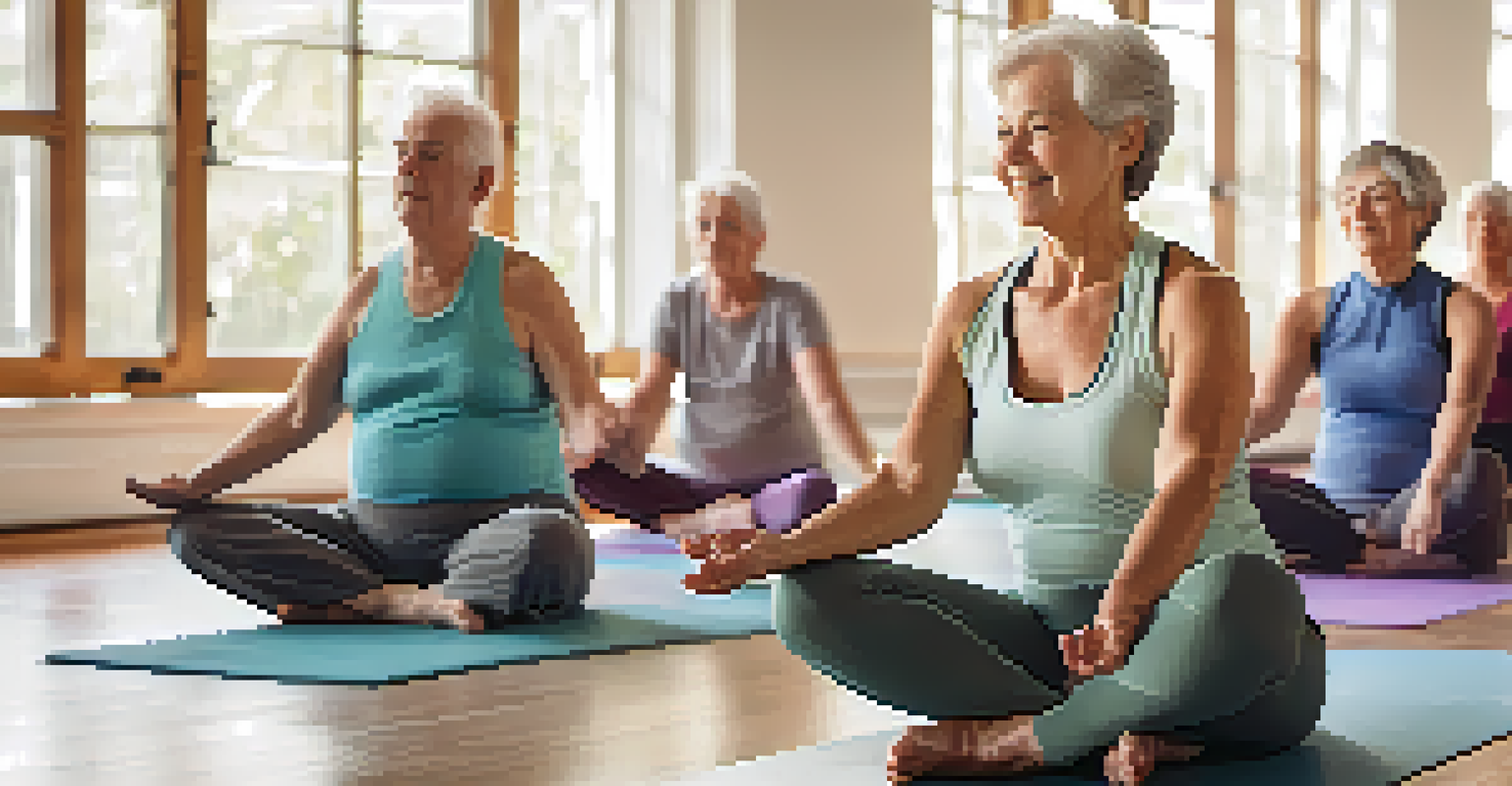Understanding Fitness Needs for Seniors: A Comprehensive Guide

Recognizing the Importance of Fitness for Seniors
Staying active is crucial for seniors, as it helps maintain physical health and enhances overall well-being. Regular exercise can improve strength, flexibility, and balance, reducing the risk of falls and injuries. Additionally, engaging in physical activities can boost mental health, providing a sense of accomplishment and reducing feelings of isolation.
The greatest wealth is health.
Many seniors may not realize the significant benefits that come with consistent physical activity. For instance, even simple exercises like walking or stretching can lead to improved mobility and enhanced quality of life. The key is to find enjoyable activities that fit individual preferences and capabilities.
Understanding the importance of fitness can motivate seniors to incorporate movement into their daily routines. When they recognize how exercise positively impacts their health, they may be more inclined to embrace a physically active lifestyle.
Assessing Individual Fitness Levels and Needs
Before starting any fitness program, it's essential for seniors to assess their current fitness levels and specific needs. This assessment can include evaluating strength, flexibility, endurance, and balance. Consulting with a healthcare professional can provide valuable insights and ensure a safe approach to exercise.

Each person's fitness journey is unique, influenced by factors like medical history, previous activity levels, and personal goals. For instance, someone recovering from an injury may require a gentler approach, focusing on rehabilitation exercises. Meanwhile, another senior might aim for more intense activities to enhance endurance.
Importance of Fitness for Seniors
Staying active enhances physical health and mental well-being, reducing the risk of falls and isolation.
By recognizing their individual fitness levels, seniors can tailor exercises to suit their capabilities. This personalized approach not only boosts confidence but also helps prevent injuries, ensuring a positive experience with physical activity.
Choosing the Right Types of Exercise for Seniors
Seniors should focus on a balanced exercise regimen that includes aerobic, strength, flexibility, and balance training. Activities like walking, swimming, or cycling are excellent for cardiovascular health, while resistance exercises using light weights can help build strength.
Take care of your body. It's the only place you have to live.
Flexibility exercises, such as yoga or stretching, are vital in maintaining joint health and preventing stiffness. Balance training, which can include tai chi or specific balance exercises, plays a crucial role in fall prevention, a significant concern for older adults.
Incorporating a variety of exercises can keep workouts interesting and engaging. Seniors should aim for at least 150 minutes of moderate-intensity aerobic activity each week, complemented by strength and flexibility exercises for optimal health.
Setting Realistic Fitness Goals for Seniors
Setting achievable fitness goals is key to maintaining motivation and progress. Seniors should start with small, specific objectives, such as walking for 10 minutes a day or completing a few strength exercises twice a week. These incremental goals can build confidence and encourage a consistent routine.
It's important for seniors to celebrate their achievements, no matter how small. Recognizing progress, like increased stamina or improved balance, can boost morale and inspire continued effort toward fitness goals. This positive reinforcement fosters a sense of accomplishment.
Personalized Fitness Assessments
Seniors should assess their individual fitness levels to tailor exercises that boost confidence and prevent injuries.
Once initial goals are met, seniors can gradually increase their targets. This progression helps keep fitness challenging and enjoyable, encouraging a lifelong commitment to physical activity and overall health.
Incorporating Social Support in Fitness Activities
Social support plays a vital role in encouraging seniors to stay active. Group fitness classes, walking clubs, or exercise sessions with friends can provide motivation and accountability. The camaraderie built through shared activities can make exercising more enjoyable.
Engaging in fitness activities with others can also foster a sense of community, reducing feelings of loneliness. For instance, joining a local senior center or community gym can introduce seniors to new friends while promoting a healthy lifestyle.
Additionally, family members can support seniors by participating in activities together. Whether it's taking a walk in the park or trying a new exercise class, shared experiences can strengthen bonds and encourage a more active lifestyle.
Understanding Safety Precautions While Exercising
Safety is paramount when it comes to senior fitness. Seniors should always start with a warm-up to prepare their bodies for exercise, reducing the risk of injury. Additionally, wearing appropriate footwear and clothing can enhance comfort and support during workouts.
It's crucial for seniors to listen to their bodies and recognize when to rest. Overexertion can lead to injuries, so they should be aware of their limits and modify exercises as needed. Consulting with a healthcare provider can further ensure a safe approach to fitness.
Setting Achievable Fitness Goals
Establishing small, realistic fitness goals fosters motivation and encourages a lifelong commitment to physical activity.
Creating a safe workout environment is also essential. This can include using non-slip mats for balance exercises, ensuring adequate lighting in workout spaces, and avoiding clutter that might pose a tripping hazard.
Embracing a Holistic Approach to Wellness
Fitness for seniors goes beyond just physical activity; it encompasses a holistic approach to overall wellness. This includes mental, emotional, and social health, as all these aspects are interconnected and contribute to well-being. Engaging in activities that promote mental stimulation, such as puzzles or reading, is equally important.
Nutrition also plays a vital role in supporting fitness goals. A balanced diet rich in nutrients can fuel the body for exercise and aid in recovery. Seniors should focus on whole foods, including fruits, vegetables, lean proteins, and whole grains, to nourish their bodies.

Lastly, practicing mindfulness through meditation or relaxation techniques can greatly enhance emotional health. This comprehensive approach encourages seniors to prioritize all facets of their well-being, leading to a healthier, more active lifestyle.